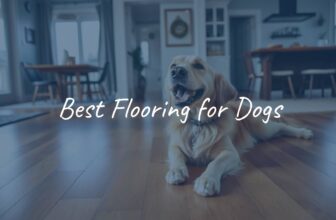
Picking a dog for an apartment isn’t just about finding the smallest or quietest one. Size and noise matter, but the best choice is a dog whose personality, energy level, and trainability fit city life. You want a dog that’s happy in close quarters, won’t upset neighbors, and won’t chew your home to pieces. The nice part is many breeds-small and even some big ones-can do very well in apartments if you meet their needs.
Finding the right apartment dog can be fun and eye-opening. From the lovable French Bulldog to the calm Greyhound, the range of options is wider than you might think. The trick is to know what traits work well in apartments and match those with your routine and space. Let’s look at what makes a good apartment dog and how to live well together.

What Makes a Dog a Good Fit for Apartment Living?
Many people think “apartment dog” means tiny and fluffy. While many small breeds do great, it’s more detailed than that. The best apartment dogs can handle small spaces, shared walls, and no yard. It’s less about square footage and more about the dog’s needs and behavior.
Knowing the key traits helps you pick wisely so both you and your dog feel calm and happy at home. Look past looks and focus on how the dog acts and what it needs day to day.
Key Traits of Apartment-Friendly Dogs
- Calm and adaptable: can relax indoors after a walk or play
- Easygoing: less likely to stress over elevators, hallway sounds, or new people
- Okay with indoor time: doesn’t need a big yard to feel satisfied
- People-focused: enjoys close contact and settles well near their owner
- Trainable: picks up house rules and manners in shared spaces
Why Size Is Not the Only Factor
It’s a common myth that only small dogs suit apartments. A small, high-energy terrier can be tougher than a big, low-energy dog that naps most of the day. Energy level and daily needs matter more than height and weight.
Take Greyhounds. They can sprint fast but are famous for loving the couch afterward. A quick run in a safe area plus a daily walk is often enough. What matters most is whether you can meet the exercise and mental needs of the dog you choose.
Barking, Shedding, and Energy: Important Considerations
These three points can make or break apartment life with a dog. Too much barking can upset neighbors. Heavy shedding can make cleaning tough and trigger allergies. And mismatched energy can lead to problem behavior.
| Factor | Why it matters |
|---|---|
| Barking | Frequent noise can cause neighbor issues and lease trouble. |
| Shedding | More hair means more cleaning and possible allergy flare-ups. |
| Energy | Dogs with higher needs require longer walks and activities to prevent boredom and chewing. |

Adaptability and Trainability in Small Spaces
Dogs that handle new places, sounds, and smells without getting nervous do well in apartments. Good training helps a lot-house-training, leash skills, and basic commands keep daily life smooth in tight areas.
Dogs happy with indoor games, puzzle toys, and short training sessions do fine without a yard. Mental work plus short bursts of activity can keep them calm and content in a smaller home.
Factors to Consider Before Choosing an Apartment Dog
Bringing a dog into an apartment is a long-term choice. Think beyond breed labels. Your schedule, building rules, and the dog’s needs all have to fit together. If they don’t, both you and the dog may feel stressed, and neighbor relations can suffer.
Before you fall in love with a cute face, be honest about your time, budget, and space. Planning ahead helps avoid problems and sets you and your dog up for a good life together.
Pet Policies and Breed Restrictions in Apartments
Many buildings have rules about pets: weight limits, size caps, or banned breeds. These rules often relate to noise, damage, or insurance. Read your lease closely and talk with your landlord or manager before picking a dog.
Skipping this step can lead to eviction or giving up your pet. Breeds like Pit Bulls are often restricted, and some places limit weight, ruling out medium or large dogs. Know the rules early to avoid heartbreak later.
Exercise Needs and Mental Stimulation
Even calm dogs need daily movement and brain work. Without a yard, plan for walks, nearby park visits, and indoor play. A bored dog may bark, chew, or act out.
- Match the breed’s needs to your schedule: quick strolls vs. long, brisk walks
- Use puzzle toys, training games, and sniffing activities to tire their mind
- Split exercise into shorter sessions if you’re busy
Separation Anxiety and Alone Time
Many apartment owners are gone during work hours. Some breeds handle alone time better than others. Dogs that need constant company can bark, chew, or have accidents when left alone.
If your dog will be solo for hours, pick a more independent breed, hire a dog walker, try doggy daycare, or arrange midday visits. Teach alone time from puppyhood so your dog builds confidence.
Noise Sensitivity and Barking Tendencies
Thin walls and close neighbors mean sound carries. Some breeds bark more, guard more, or react to every hallway step. Choose a quieter breed if your building is noisy, and train early to manage alerts and excitement.
Help your dog get used to common building sounds so every noise doesn’t become a big event. Calm dogs make peaceful neighbors.
Best Dog Breeds for Apartments
With the basics covered, here are breeds known to do well in apartments. You’ll find tiny companions and some bigger, relaxed dogs too. These picks come from typical breed traits and energy levels, but remember: each dog is an individual.
Use these as a guide, then meet dogs in person to find the right match for your home and routine.
Small Breeds Recommended for Apartment Living
Small dogs are popular for apartments. They take up little space and many are happy with short walks and indoor games. They often enjoy lap time and close bonds.
French Bulldog
Frenchies are quiet, friendly, and well-mannered in small spaces. Two 30-minute walks a day usually works. They like people, get along with other dogs, and don’t bark much. Keep them cool in warm weather due to short snouts. Short coats make grooming simple.
Cavalier King Charles Spaniel
Affectionate and gentle, Cavaliers bond closely with their families and prefer being near you. They’re easy to train, enjoy short walks and indoor play, and don’t shed heavily. Barking is usually moderate and manageable.
Dachshund
Small, funny, and loyal, Dachshunds don’t need lots of space. A moderate daily walk is fine, then they’re ready to rest. Smooth coats are easy to care for. They can be vocal, so steady positive training helps keep barking in check.
Maltese
Tiny, sweet, and people-loving, Maltese dogs do well in small homes. They’re low energy, easy to train, and have a hypoallergenic coat with very low shedding. They prefer not to be alone for long and may bark if lonely.
Chihuahua
Very small but bold and loyal, Chihuahuas fit even studio apartments. Short walks and indoor play are enough. They can bark at new sights and sounds, so training helps. They often do best as the only pet and don’t like long periods alone.
Boston Terrier
Active yet manageable, Bostons adapt fast to apartment life. Daily walks and house games work well. They’re friendly, cuddle-ready, and don’t bark much. Watch heat in warm weather, as they can overheat.
Shih Tzu
Friendly and affectionate, Shih Tzus are happy with short indoor play sessions and brief walks. They shed very little and enjoy time with people and kids. They can be vocal, but training helps keep noise down.
Yorkshire Terrier
Confident and loving, Yorkies have medium energy and need daily walks and play. They shed very little. They adjust fast to apartments but can bark a lot without training and social time.
Bichon Frise
Cheerful and sturdy, Bichons handle apartment life well. They need short daily walks and enjoy training games. They shed very little and don’t bark much, though they may if left alone too long.
Havanese
Playful and cuddly, the Havanese learns fast and settles well in small spaces. They shed very little but need daily coat care. Barking is low, and they’re great with kids.
Pekingese
Calm and loyal lapdogs, Pekingese are quiet and content with short daily walks. They can be stubborn, so patient training helps. Their long coat needs daily grooming.
Pug
Easygoing and loving, Pugs do well with indoor play and short walks. They’re gentle with people and pets but can snore. Shedding can be heavy at times, so expect some extra cleaning.
Pomeranian
Small, fluffy, and lively, Poms enjoy short walks and indoor games. They’re confident and social, but many like to bark, which suits owners who don’t mind some noise. Shedding is modest, and energy is moderate.
Coton de Tulear
Sweet and playful, Cotons are quiet and hypoallergenic, with low shedding. They do well in small spaces with daily walks and play. They dislike being alone and do best with someone home most of the day.

Medium and Large Breeds That Thrive in Apartments
Some bigger dogs are calm indoors and fit apartment life well. Meet their exercise needs with walks and outings, and they can be easy housemates.
Greyhound
Fast outside, calm inside. Greyhounds are affectionate, gentle, and usually fine with a 30-minute walk plus the odd sprint in a safe area. They shed little, bark little, and train well. Their size is large, but their manners are easygoing.
Whippet
Similar to Greyhounds but smaller, Whippets need two walks a day and playtime. Without enough exercise, they may get destructive. With enough movement, they’re quiet, low-shedding, and smart, making them good apartment dogs for active owners.
Bulldog
Calm and people-loving, Bulldogs enjoy short daily walks and lots of couch time. They don’t bark much but can snore and snort. Shedding is low, and training needs are moderate. Watch weight and heat.
Basset Hound
Laid-back and loyal, Bassets are fine with one good walk a day and indoor scent games. They do drool and shed, and their bark is deep and loud, so early training helps if they’re alone often.
Italian Greyhound
Light, graceful, and affectionate, Italian Greyhounds need short walks and brief sprints. They’re sensitive to noise and prefer calm homes. Low shedding, low barking, and a gentle nature make them good companions for renters.
Low-Shedding and Hypoallergenic Apartment Dogs
For allergy-prone owners or anyone who dislikes loose hair, low-shedding and hypoallergenic breeds can make life easier. These dogs tend to spread less dander and track less dirt, which helps keep your home cleaner and your nose happier.
No dog is 100% hypoallergenic, but the breeds below come close and are often a good match for sensitive owners.
Best Breeds for Allergy Sufferers
These breeds usually have hair, not fur, or a single coat that sheds less. That means fewer allergens in the air and on surfaces, which can reduce reactions and make cleaning easier.
They also tend to be friendly, smart, and able to live well in smaller homes.
Toy Poodle
Toy Poodles are smart, eager to learn, and have hypoallergenic coats. They need daily walks and mental games but can burn much of their energy indoors. They may bark without training, but they learn house rules quickly. Regular brushing and grooming are needed, with little shedding.
Miniature Poodle
Like the Toy, the Miniature Poodle has a low-shedding, hypoallergenic coat. They’re social, playful, and active, so plan for both physical and mental exercise. Barking can be moderate, but they train easily.
Bichon Frise
Bichons shed very little and often suit allergy-sensitive homes. Short walks and indoor play keep them happy. They’re easy to train and friendly, though they may bark if left alone too long.
Maltese
Maltese dogs have very low shedding and a hypoallergenic coat. They’re gentle, small, and easy to live with in tight spaces. Short walks and light play are enough. They prefer company and may bark when left alone.
Havanese
Havanese shed very little and are good for allergy-prone families. They need daily walks and play, enjoy cuddling, and adapt well to small homes. Brush their coat daily to prevent mats.
Coton de Tulear
Cotons are hypoallergenic and quiet, with low shedding. They do well in small places with daily walks and play. They don’t like long alone time, so they fit best with someone home often.
Lhasa Apso
Lhasas shed very little and can suit allergy concerns. They enjoy a daily walk plus indoor brain games, and they can be vocal without training. Their long coat needs regular grooming and dental care.
Tips for Raising a Happy Dog in an Apartment
Breed choice is just the start. Your dog’s health and happiness depend on daily care, movement, and mental work. With steady routines and smart setups, apartment dogs can live full, calm lives.
Use the tips below to handle city living with your dog while keeping peace at home and with neighbors.
Daily Exercise and Playtime Indoors
Without a yard, outside time matters every day. Even laid-back dogs need walks to move, potty, and see the world. Active dogs may need longer walks or trips to a dog park.
When weather or time is tight, try indoor fetch down a hallway, hide-and-seek, short training drills, or “sit/down/stand” reps. Keep it steady so your dog’s needs are met each day.
Managing Barking and Noise
Noise can cause problems in close quarters. Start early. Spot what triggers barking-hallway sounds, people outside, boredom, or worry-and address it.
- Teach a “quiet” cue and reward silence
- Play building sounds at low volume and reward calm
- Give enough exercise and brain work to reduce restless barking
- For anxious dogs, work on confidence and safe alone time; white noise and light soundproofing can help
Mental Stimulation in Small Spaces
Mental work can tire a dog as much as a long walk. Try puzzle toys, slow feeders, scent games like “find it,” and short training sessions. Rotate toys so they feel fresh and interesting. A busy mind helps prevent chewing and nonstop barking.

Potty Training Solutions for Apartment Dogs
Set a routine and stick to it. Take your dog out after waking, after meals, and before bed. Pick a regular potty spot and give high-value rewards for using it.
For young puppies or when you can’t get outside fast, use pee pads or indoor grass. Aim to move from pads to outdoor breaks over time. If you’re gone long hours, hire a walker so your dog doesn’t have to hold it too long.
Frequently Asked Questions About Apartment Dogs
City living raises lots of questions about space, noise, and routines with dogs. Here are clear answers to common concerns so you can feel ready to bring a dog home.
Use these quick guides to plan ahead and avoid common stumbling blocks.
Are big dogs suitable for apartments?
Yes. Size alone doesn’t decide success. Calm, low-energy large breeds can do better than small, high-energy ones. Greyhounds, Great Danes, and Bulldogs often lounge most of the day if they get daily walks and a comfy spot to rest. Always check weight limits in your building.
How do I keep my dog from barking in an apartment?
Find the cause, then train for it. For alert barking, teach “quiet” and reward silence. Build tolerance to hallway sounds with recordings at low volume, increasing slowly while rewarding calm. Give enough exercise and brain games to prevent boredom. If worry is the root cause, work with a trainer or veterinary behaviorist on a plan specific to your dog.
What breeds have low separation anxiety?
Any dog can struggle, but some are more independent. Bulldogs, French Bulldogs, and Greyhounds often handle alone time better than clingy breeds. Still, each dog is different. Practice short absences, offer puzzle toys, and create a cozy rest spot to build confidence.
Which breed is best for first-time dog owners living in apartments?
Pick a breed that’s easy to train, calm, and doesn’t need tons of exercise. Good picks include the Cavalier King Charles Spaniel, Boston Terrier, Bichon Frise, and Pug. They tend to be friendly, manageable, and a good fit for people starting out with dogs.
Can dogs be alone all day in an apartment?
Leaving a dog alone for 8 or more hours on a regular basis isn’t a good idea. Dogs need company, routine, and outlets for energy. Long stretches alone can lead to barking, chewing, or accidents.
If you work long days, arrange help. Hire a dog walker, use daycare a few days a week, or ask a friend to visit. Give solid exercise and mental games before and after work so your dog can rest while you’re away.






